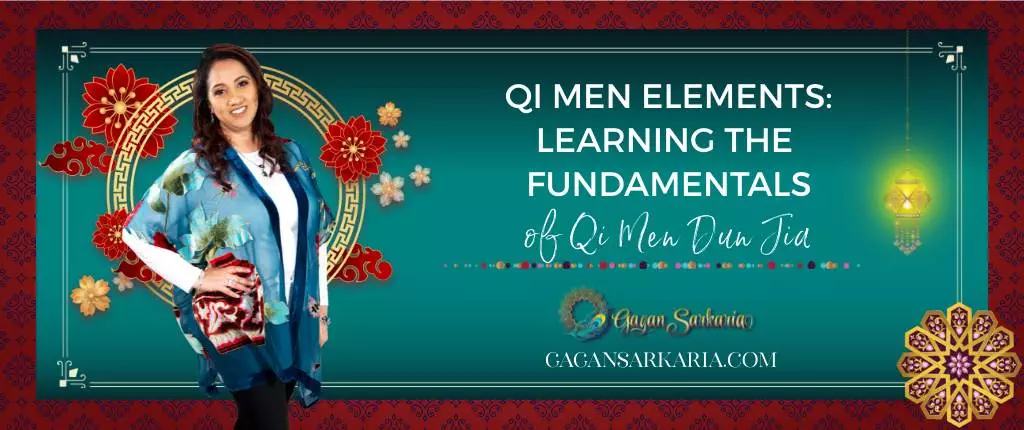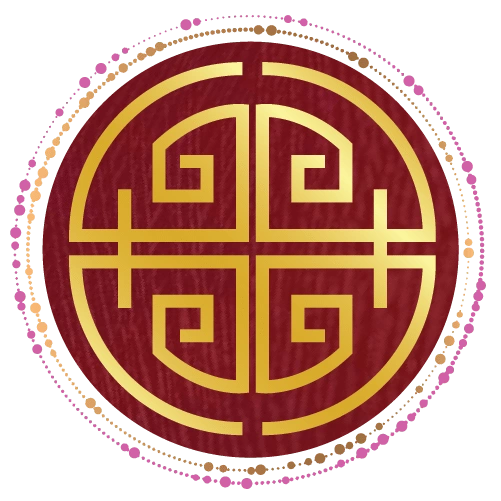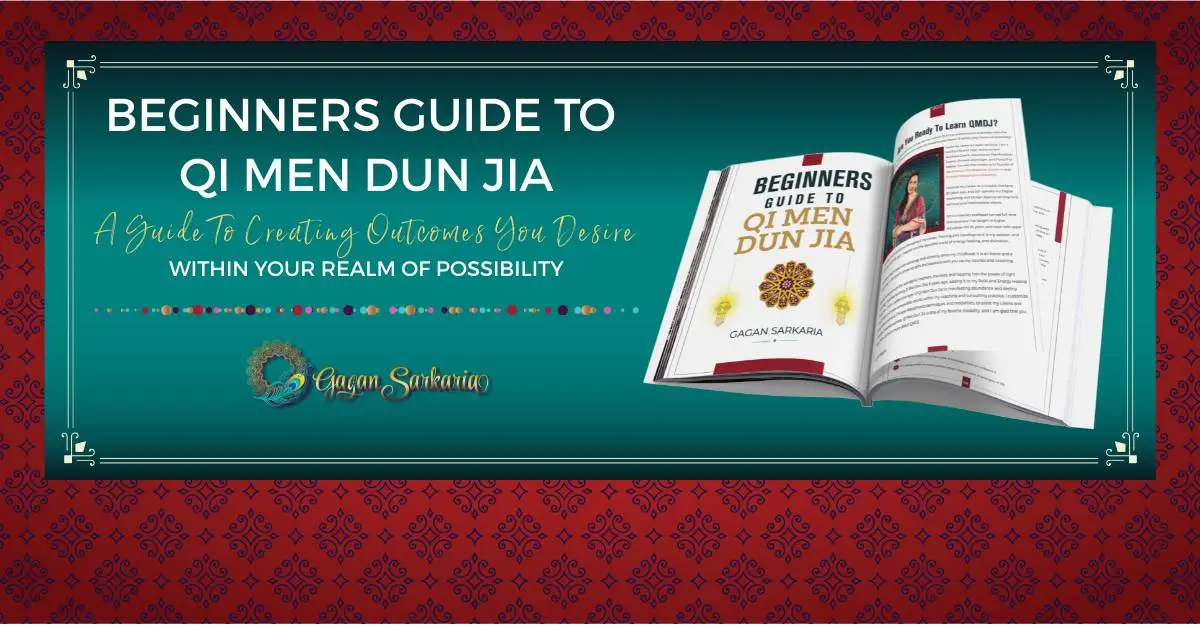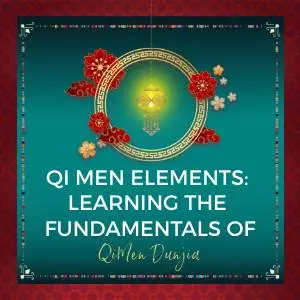Qi Men Elements: Learning the Fundamentals of Qi Men Dun Jia

Qi Men Elements: Learning the Fundamentals of Qi Men Dun Jia
Are you here to learn the qimen fundamentals? Qi Men Dun Jia (QMDJ) is one of the world’s top three Chinese metaphysics divination practices, along with Tai Yi Shen Shu and Da Liu Ren. Having been in existence for over five thousand years, it’s surprising that very few individuals can master the qi men elements at a high skill level.
Back in the day, QiMen masters taught the original Warcraft execution skills of Qi Men Dun Jia only to individuals who had suitable characters and attributes. After all, the practices can be so complicated that even many who practice other forms of Chinese Metaphysics have difficulty understanding and applying it. I find Qi Men Dun Jia to be one of the best decision-making tools in modern times used in life and business! So, if you’re looking to give this ancient system a go, let me walk you through the qimen basics today.
Qimen dunjia fundamentals to master
Each person learns new information differently. Some prefer reading books on destiny analysis, and some like obtaining basic knowledge through practical application. You may choose to enroll in a course or through a case study. No matter what your preference, learning the fundamentals of Qi Men Dun Jia is where you will start. For Qimen destiny analysis, each person or student of qimen must learn the following fundamentals:
- The Yin Yang theory and the relationship between the five elements
- The ten Heavenly stems and their possible combinations. The heavenly stem in Qimen is interpreted differently from Ba Zi.
- The heaven plate, man plate, earth plate, and God plate, and their original energy location and position
- The Early Heaven and Later Heaven Ba Gua
- Sixty Jia Zi
- Four Pillars, Fan Yin, Fuyin, Emptiness, and Travelling Horse Star
- The meaning of Jia, its location, and the implication in different cases or focal points
- The Heavenly stars
- Different types of Qimen Divination methodologies
- The steps to perform divination and some basic understanding of Ba Zi’s four pillars of destiny science.
- The energy of nine palaces and the implications of the readings of each palace
- The 8 doors, active 8 deities, death and emptiness, horse star, Hetu, and Luo Shu
There are so many more things to learn in this practice, but hopefully, this will give you a simple outline of some things you can expect to learn!
Qimen Dunjia basics and the importance of time
Different schools approach various ways of charting; however, the most popular methods include the Chai Bu Method (Removal and Replacement Method of Qi Men Dun Jia) and the Zhi Run Method (adding extra). Notably, the Zhi Run method is the oldest, original method, also known as the Imperial Qi Men, used for military affairs, which aligns with The Art of War — strategic execution and warcraft from the origination time of QiMen in ancient China. Both methods, importantly, incorporate Qi Men elements to enhance their analytical and strategic applications. Therefore, understanding these techniques is essential as part of Qimen Dunjia basics.
Analyzing the chart depends on many factors, including the QiMen practitioner’s expertise, experience, and the Chinese Metaphysics academy or school they attended to learn Qimen. I have been studying Qimen from Dato Joey Yap of Mastery Academy in Kuala Lumpur, Malaysia, so my terminology and application of Qimen fundamentals are based on his teachings, divination methods, destiny analysis, forecasting applications, and execution strategies.
The fundamental way to read a qimen dunjia chart is by assessing the relationship between the Ba Zi day master and hour master plotted on a qimen hour chart. The Chinese animal zodiacs influence the energy of the qimen “hour chart” (2 hours of timeframe).
In the Chinese calendar system, time begins at Zi, the Rat Zodiac hour, from 11 pm to 12:59 am, known as Early or Later Rat hour. For example, 7 pm to 8:59 pm is the Dog hour, using one Qi Men chart. The chart changes at 9 pm for two hours. When plotting a qimen chart, incorporate Qi Men elements with local time, requiring no conversion. Understanding these time divisions is crucial in Qimen Dunjia basics, enhancing accurate chart interpretation.
The five different kinds of QiMen Dun Jia charts are:
- the yearly chart,
- the monthly chart,
- the day chart,
- the qimen hourly chart, and
- the fixed destiny Qi Men chart.
In Chinese metaphysics, one hour equals two western hours. The 12 Zodiacs represent time in Chinese Metaphysics, whether divination modalities, destiny science methods like Purple Star Zi Wei Dou Shu astrology, traditional Chinese Medicine, Feng Shui, etc.
The Annual Qi Men chart can help assess and plan your year. The annual qimen chart is a fixed chart that you overlay and use in conjunction with your destiny qimen chart to personalize, which becomes a pathway to achieve your goals and plan for success or to mitigate adverse outcomes. Many use this to indicate economic shifts but not to forecast significant global events.
A monthly Qi Men chart offers insights into the energy affecting a specific month’s events. What kind of energy does a month bring in? What major themes, events, potential outcomes, and decisions can you make for various purposes?
As mentioned above, an hourly Qi Men chart is the most frequently used chart, enabling users to gain clarity on their decision-making process.
Reading a Qimen chart as a practitioner.
When analyzing and learning how to read a Qi Men Dun Jia chart, it would help to consider various things, including Qi Men elements. One of the most crucial aspects is identifying the correct “useful god,” which means identifying the right focal point of your reading — considering the subject of the question. The day pillar could represent the asker, while the hour pillar can offer insights into the outcome.
As a practitioner, I find Qi Men Dun Jia (奇門遁甲) to be a fascinating divination modality of Chinese Metaphysics. It’s an ancient form of divination used for centuries to help people make decisions about their lives and businesses. Qi Men Dun Jia is a complex system, and it can be challenging to learn how to read it correctly. Suppose you master this system by cultivating your intuition, learning the basic knowledge and methodologies, and practicing enough to gain confidence. In that case, you too can understand how the universe works and your role in manifesting your abundance in a specific moment.
Proper training in QiMen, including an understanding of Qi Men elements, can therefore help you strategically solve a problem and create remarkable results. One of Qi Men Dun Jia’s key strengths is its ability to analyze the current moment’s energy by tapping into the existing space and time. Consequently, by placing the person at the most promising point at the right time and direction, one can ultimately achieve the best outcomes for their goals. Furthermore, the Qi Men Dunjia system has foundations in the theory of yin and yang and utilizes various techniques, including observation, calculation, and divination. Therefore, based on a complex analysis of time and space, energy mapping gets plotted in a Qimen chart. Understanding these principles is an essential part of Qimen Dunjia basics.
Qi men elements
As a beginner learning Qimen Dunjia, you are looking at eight main qi men elements here.
- The 9 Palaces
- Directional and elemental energies
- 10 Qimen Deities
- 9 Heavenly Stars
- 8 Doors
- Ten Heavenly Stems and combinations
- Death and Emptiness
- The Sky Horse
Qimen Palaces
On a basic qimen chart, you can see 9 palaces. Each palace has the following Qi Men elements:
- A QiMen Deity that addresses the Qi or energy of the Spirit or Universe realm.
- A Heavenly Star that shows the Heavenly Qi. The 9 stars denote the environment.
- A QiMen Door is about the Earth realm or earthly matters. The 8 doors represent the action or opportunity in a focal point palace on the chart.
- Two or three Heavenly Stems represent people’s matters or future outcomes. The stem combinations assist in understanding the consequences if you decide to go forward with the identified action.
Directional and elemental energies
A basic Qimen chart, as part of Qimen Dunjia basics, follows the nine boxes based on Luo Shu’s directional elements. Specifically, the nine qimen palaces mimic Luo Shu’s elemental energy. For example, the South Palace on the qimen chart corresponds to the fire element, aligning with the Li Gua Fire element of the Luo Shu. Additionally, SW, Center, and NE directions represent the earth element. Meanwhile, W and NW embody the energy of the metal element. Furthermore, North signifies the water element, while E and SE symbolize wood. Understanding these associations is crucial when interpreting a Qimen chart.
Qi Men Deities
There are 10 deities in Qi Men Dunjia. Only 8 deities show up on a QMDJ chart. Deities represent the spirit realm where miracles happen. In divination and manifesting, understanding the superpowers of the 10 deities is very important.
Qi Men Dun Jia Stars
In Qimen Dunjia basics, there are nine stars in a Qi Men Dun Jia chart. These heavenly stars specifically represent the environment or the economic conditions most suited for our focal point. It is important to remember that having a goal or a decision to make is a critical requirement in Qimen applications. Therefore, understanding these stars and their influences is essential for effectively utilizing Qimen strategies.
Qi men dunjia stems
The ten heavenly stems in Qimen Dunjia govern the outcomes and are a crucial part of Qi Men elements. They are similar to the stems in Ba Zi, but their meaning is different. In Qimen, we focus on the energetic force of the Heavenly Stems combinations to carry out something (the action the asker may take). Unlike in Ba Zi, heavenly stems do not represent personality traits in Qimen forecasting or strategic execution.
Qi men dunjia the doors
In qimen, the 8 doors in a QMDJ chart represent the opportunities you have available to you. We focus on doors if we seek permanent results.
Learning the fundamentals through a Qimen course
As you can see, learning the fundamentals of Qi Men Dun Jia can be more complicated. But this doesn’t mean that you shouldn’t try. Learning qimen requires you to cultivate your intuition and be on an exploration journey. Once you’ve mastered this practice, you can do qimen forecasting and make better decisions in your life, career, finances, relationships, and business.

The Chinese culture and metaphysics teach that mindset is a choice.
So choose wisely. Your job is not to prove yourself but to improve yourself.

So to continue on your journey of self-improvement, you can incorporate QiMen Dunjia strategic execution, including Qi Men elements, to achieve remarkable results. We all understand the benefits of being at the right place at the right time, correct? Qimen’s strategic execution application offers insights into auspicious structures and possible combinations from Zhuge Liang’s art of war. The depth of the modality also allows you to choose the best time to carry out specific actions. You may even be able to transform a bad situation into a good one in some particular cases. Adding the Qi Men Feng Shui activations can speed up your ability to improve yourself and your varied situations. With passion, practice, and persistence, you can master Qi Men Dun Jia practice and take on a new perspective and personal development path to create breakthroughs for yourself and help others along the way!
If you are interested in learning Qimen Dunjia, enroll in my upcoming qimen course. You can also download and print my beginner’s guide below.


